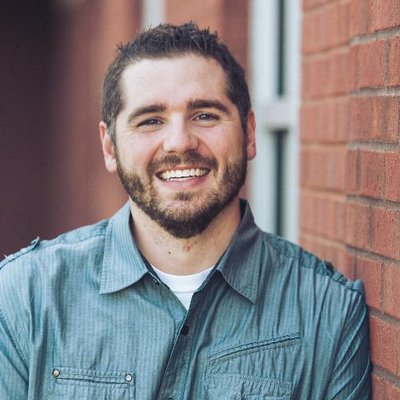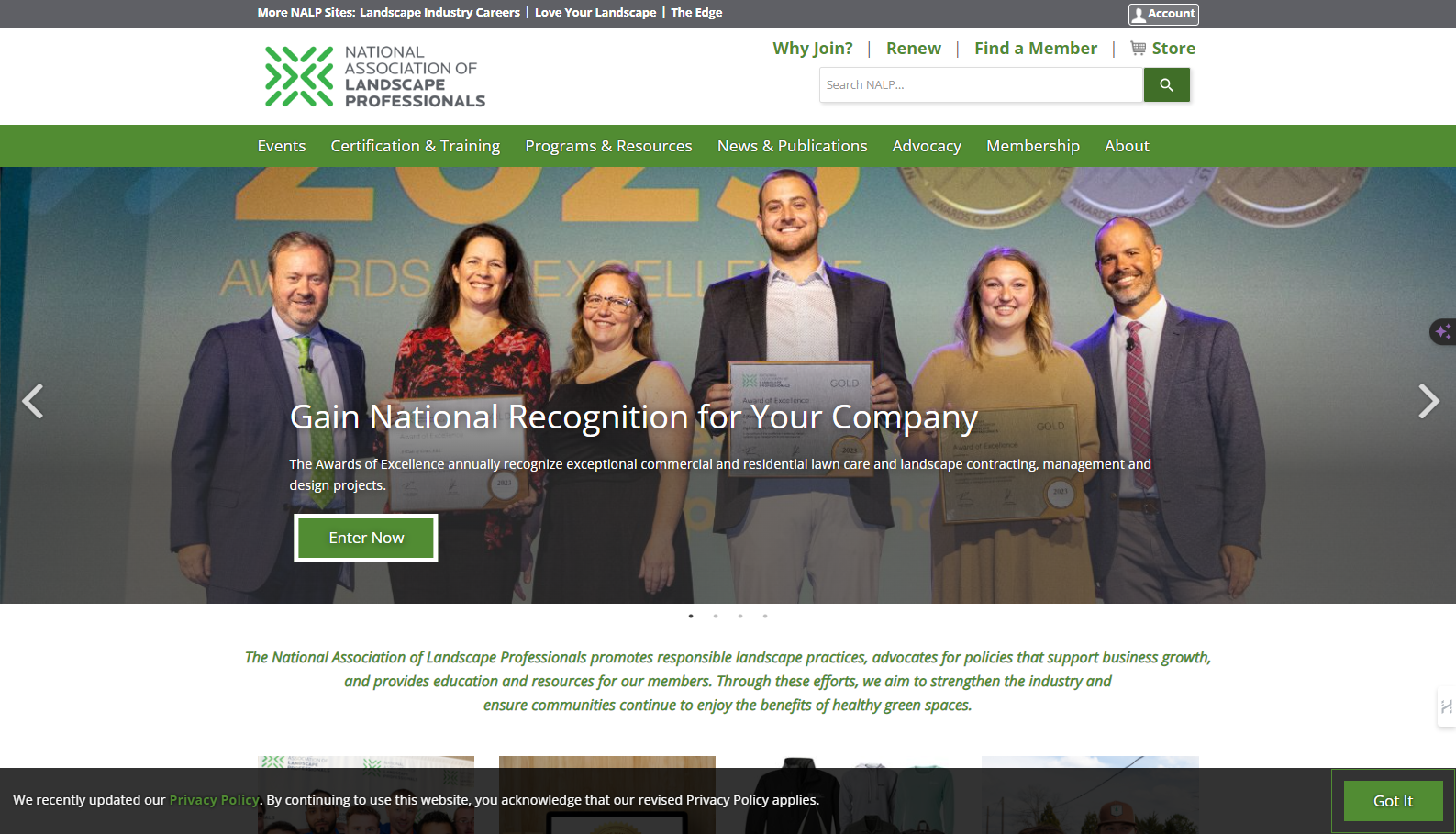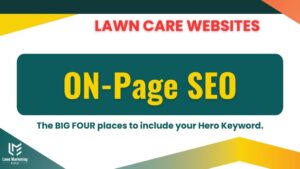Lawn Care & Landscaping Backlinks in 2024
Ever wonder why some of your local competitors seem to dominate search engine results for lawn and landscape services? The answer could lie in a hidden factor: backlinks. While you might focus on creating great content and optimizing your website, backlinks play a crucial role in how Google perceives your authority and relevance.
Want to understand how Lawncare Backlinking works in the big picture of SEO? Make sure to check out our 2024 Landscaping SEO Guide here.
Why do backlinks matter for my lawn care website in 2024?
Think of backlinks as votes of confidence from other websites to yours. The more relevant and high-quality these backlinks are, the more “powerful” your website appears to Google, potentially boosting your ranking for targeted keywords. So when a reputable website links to yours, it’s akin to receiving a glowing testimonial from a respected peer. Search engines like Google interpret these endorsements as a signal of your lawn care website’s value and relevance.
The more high-quality backlinks you possess, the stronger your website’s reputation becomes, potentially catapulting it towards the top of search results for your targeted keywords. But simply accumulating backlinks isn’t enough. It’s all about strategic quality. Like a discerning connoisseur, prioritize relevance and authority above mere quantity.
This blog post will delve into the basics of backlinks and how they impact your lawn and landscape website, empowering you to take action and improve your online presence.

Backlink Truths Landscapers Need to Know
Want to learn more about how Google looks at your backlink power? Here’s a video to help guide you through that.
More is (usually) better.
In most cases, the more backlinks you have, the better. Business owners, in particular, benefit from having a greater quantity of backlinks from diverse sources.
However, there is one exception to this rule. If you engage with a spammy SEO company or purchase 25,000 links from random websites on platforms like Fiverr, it will not help your landscaping business.
In fact, it can be dangerous because Google penalizes unnatural linking to your site. Therefore, it’s essential to avoid such practices.
Relevance matters.
Obtaining a backlink from another lawn care or landscape-related website holds more value in terms of relevance compared to, let’s say, a site that sells backpacks or operates as a florist. Backlinks from niche-related websites are seen by Google as votes of confidence from industry peers. Such links tend to carry more weight. That being said, relevance can be viewed from two angles.
Firstly, there’s relevance to lawn and landscape subject matter. Secondly, there’s geographical relevance, which relates to the location or geographic area you are targeting. Google recognizes and values specific locations such as Nashville, Tennessee or Oklahoma City, Oklahoma. It associates websites with subject matters relevant to these specific areas. Hence, acquiring backlinks from websites related to these locations can be advantageous.
For instance, if a website talks about the same city as yours but may not be directly related to your subject matter, it still holds value as it signals geographical relevance. Thus, it’s generally valuable to obtain such links.
Can I get links from non-lawn care or landscaping websites?
Don’t limit yourself to direct competitors. Explore the link-building potential of websites offering related services like fencing, pest control, or even home improvement companies. Leverage local connections and partnerships to build a web of trust and authority that extends beyond your immediate niche. Remember, even seemingly disparate industries can be interconnected, creating valuable opportunities for collaboration and link-building.
Not all links are created equal.
We’ll get into more detail on this later, but in a nutshell, high-authority websites with numerous backlinks provide more “voting power” than smaller ones. For example, getting any link from a big website like the NALP that has 80,000 backlinks will give you a lot more value than a link from a website with, let’s say, 10 backlinks. But DON’T get hung up on this either. Most people will see this fact and focus all their efforts on securing those big links. These big sites are few and far in between; the important thing is to just go and start getting yourself backlinks.
Cross-linking can be okay.
Yes it can, but at a small scale. Exchanging links with relevant businesses in moderation is acceptable. Tread carefully and prioritize organic, one-way links for maximum impact. Think of them as one-sided endorsements that hold more weight in the eyes of search engines. In fact, these are the holy grail of the backlink world, offering the most value and authority. Focus on creating content so valuable and informative that it naturally attracts links from other websites without any quid-pro-quo involved. And of course, avoid large-scale, unnatural link exchanges.
Anchor text matters
The text displayed when hovering over a link (anchor text) can influence relevance. In fact, it is a KEY relevancy signal, and this is where you need to be careful not to abuse this like some SEOs used to back then. For example, you own a lawn care company in Jackson, Tennessee and want to add a call-to-action like, “Check out my lawn care company in Jackson, Tennessee” with a link to your site. That was the textbook way to help your site gain more power. Because what you’re essentially saying is not only is this a link from this site to mine, but it’s a link that’s talking about the exact service I do in the city that I do it. But it got super over-abused, and now Google doesn’t pay as much attention to it.
So the most important thing, really, is to include relevant keywords naturally within anchor text. That said, don’t get hung up on exact-match keywords. Partial match keywords will still count. The important thing is to focus on using them naturally and strategically within the anchor text.
Do exact-match domains work?
Yes and no. They can be helpful, but it’s not a magic bullet to implement SEO on your landscaping website. Where they really shine is the fact that every time somebody links to you by listing your landscape or lawn care website, they have to list your target keyword as part of that. Aside from that, it’s still infinitely more productive to keep working on on building high-quality content and backlinks to truly solidify your ranking.
Understanding the Backlink Math
Now how does Google calculate the power of each backlink? Let’s dive in.
Imagine each website linking to yours as a vote of confidence. More votes (backlinks) from authoritative websites contribute more “power” to your site. This power flows not just to your homepage but also to individual pages linked to. For example, a blog post with numerous backlinks can rank higher than your homepage for specific keywords.

Keep in mind: backlinks are not solely directed to the homepage of a website; individual pages also receive backlinks.
Consider the NALP site as an example.
Apart from the homepage, there are internal pages with 251 referring domains linking to one page and 74 links to another. Individual pages obtain direct power from backlinks, just like the homepage.
What do I need to look out for when linking internal pages on my lawncare site?
Since it’s uncommon for external websites to link to service area pages within your site, Google has noticed instances of abuse in this regard. It’s important to refrain from excessively linking to internal pages that seem irrelevant or unnatural to be linked to.
For example, suppose you’re trying to rank for another service area and flood that specific page with numerous backlinks that don’t quite make sense. Doing so can lead to trouble. However, using natural and educational blogs or similar content to create links could be more beneficial as these are commonly linked to on the internet. You can then employ internal links to redistribute the power throughout your landscaping site. Keep these considerations in mind when building your backlink profile and optimizing your website’s ranking.
So what do I do next? Start simple, but take action.
- Network with Local Businesses: Reach out to complementary businesses in your area and explore cross-linking opportunities. Offer guest blog posts or highlight their services on your landscape website in exchange for a link back.
- Join the Community: Become active in online forums, communities, and directories relevant to your industry. Share your expertise and engage in discussions, naturally incorporating links to your lawncare website where appropriate.
- Content is King (and Queen of Backlinks): Create valuable, informative content that attracts attention and encourages other websites to link to it. Share your content on social media and relevant online communities to maximize its reach. Consider guest blogging on other websites in your niche to reach a wider audience.
- Local Sponsorships: Consider partnering with local events, organizations, or charities for sponsorships. This can provide valuable backlinks and enhance your brand awareness within the community. Look for opportunities to offer your services or expertise in exchange for mentions and links on their websites.
Remember… Start small and scale up.
Don’t try to build hundreds of backlinks overnight. It’s better to have a few high-quality links than a lot of low-quality ones. Then, focus on consistency; building backlinks is an ongoing process. Set aside time each week to work on acquiring new links.
Lastly, and in some ways, most importantly, track your progress: Use tools like Google Search Console and Ahrefs to monitor your lawncare website’s backlink profile and see how your efforts are paying dividends.
Why? Every time somebody links to you by listing your website, they have to list your keyword, the keyword that you’re after, as part of that. So that’s where they really garner a lot of their power.

The Final Word: Backlinks are a Journey, Not a Destination
Building a strong backlink profile takes time, effort, and consistent action. By taking these fundamental principles, doing what you can as soon as you can with the strategies outlined, and diligently tracking your progress, you can leverage the power of backlinks to propel your lawn and landscape website to the top of search results and attract more customers to your business.
Stay tuned for our next post on internal linking, where we’ll explore how to efficiently distribute the “power” gained from backlinks throughout your website for maximum impact.
Remember, the key is to take action, and to take action now. Reach out if you need help!













